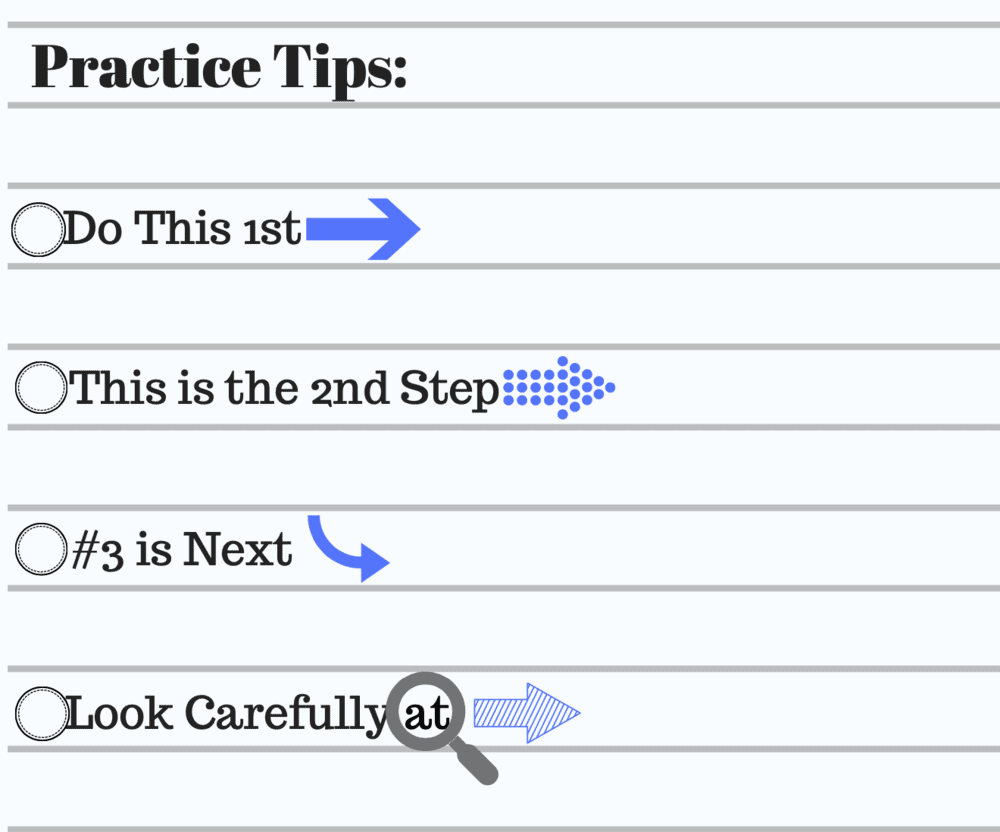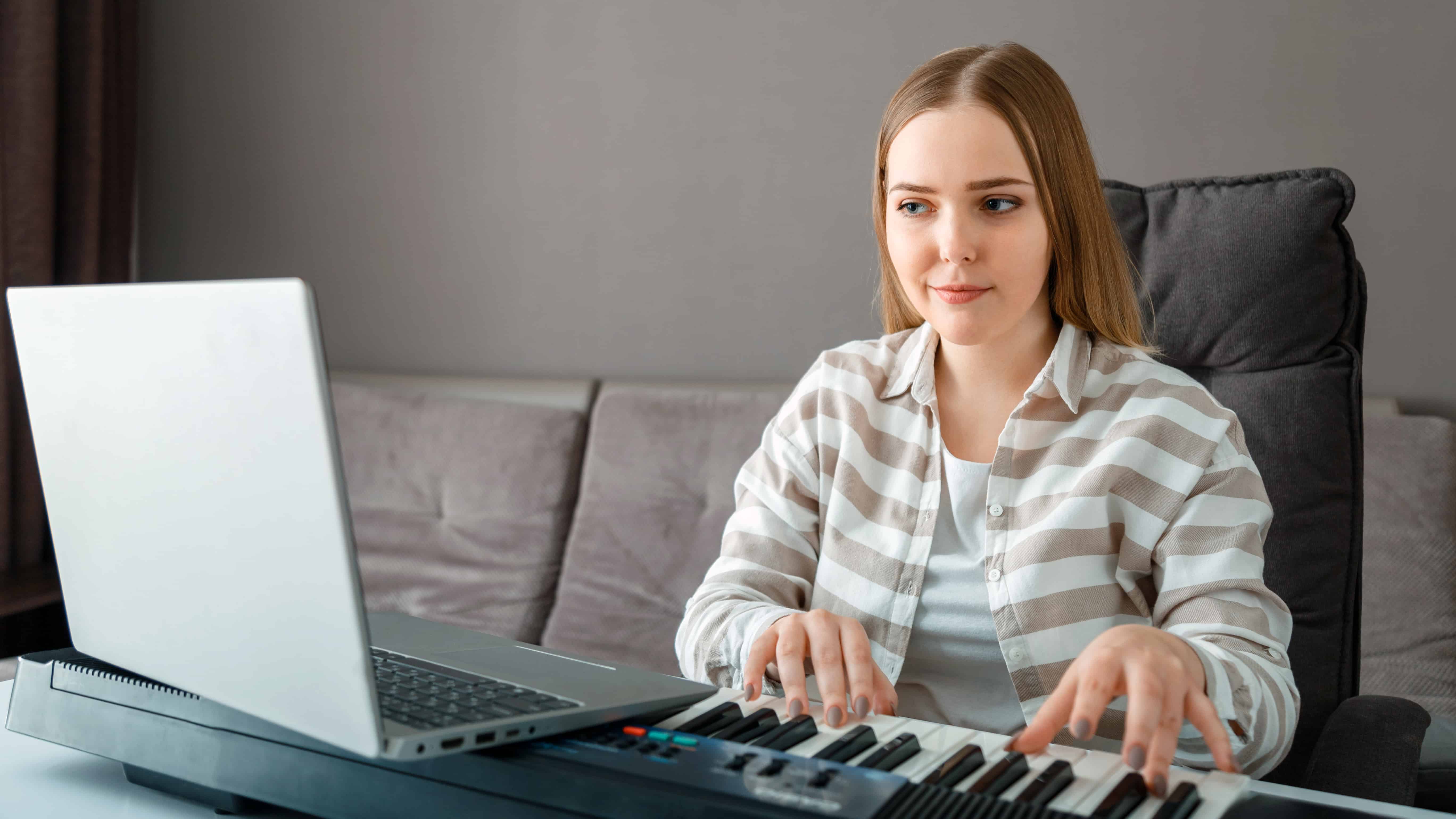6 Ways Piano Teachers Can Give Assignments To Students
In this article, we’ll explore six different ways that piano teachers can go about giving assignments to their students!

Every piano teacher will agree that the magic of piano lessons happens at home when students practice their assignments for the week. Teachers can only cover so much material in weekly lessons, so it’s up to the student to complete their assignments at home to make progress each week.
There are tons of different ways that teachers can go about giving assignments. Most teachers probably have a personal preference or something that works well for them. Meanwhile, every student is wired a little bit differently and has their own preferences about what helps them practice the best.
There will always be students who show up to a lesson without practicing or who aren’t quite sure how or what to practice. Then there are the students who go above and beyond and practice way more than you expected. Most students fall somewhere in the middle.
It’s a good idea to periodically change up your assignment routine to try to catch students who need a different approach to piano assignments.
Let’s explore many different ways that piano teachers can go about giving assignments to their piano students.
1. Use an Assignment Book

Piano assignment books are helpful because the pages are designed to include features that are very relevant to piano lessons, versus using a blank page from a notebook.
There are a few different options for assignment books.
You can get a preprinted assignment book (like this inexpensive option from Amazon). It has enough pages for 52 weeks of lessons and is basic enough that it would work in most piano lesson situations.
Another option is to print assignment pages. It’s easy to find free or inexpensive assignment pages online that you can print at home or at a print shop. You can add these pages to a 3 ring binder or use a comb binder to bind them into a notebook.
Here are a few examples of handy assignment pages:
- Piano Lessons Assignment Sheet (Track Practice): This is a super basic assignment page that helps students track how much they practiced.
- Piano Lessons Assignment Sheet (Carnival of the Animals): This animal-themed assignment page helps students set weekly goals and break down their goals into actionable steps:
- Piano Lessons Assignment Sheet Bundle: Here’s a bundle that has a variety of designs to choose from:
If pre-designed assignment pages don’t quite match what you’re looking for, you can always design your own. Using a custom assignment book is a fun way to bring a theme into your studio. It also allows you to include elements that are most important to you. You can easily add pages that you want your own students to reference regularly. A 3-ring binder, a folder with brads or comb binding are all great ways to hold your custom-designed assignment book.
2. Use Post-It Notes
Every teacher knows that student who practices has trouble keeping track of extra books and assignment pages. Or, the student who never actually opens an assignment book. Post-It Notes come in handy for these students. You can stick the assignment right on the sheet music or the cover of the student’s lesson book so that it’s right in front of them at all times.
Of course, any basic Post-It Note will do the job. But, if you want something a little more special, you can use a printer template to customize Post-It Notes.
Here’s a template for a practice assignment Post-It Note from Julie Duda Music Studio:

3. Use a Notebook
Some teachers or students might feel distracted with a busy assignment page. A simple lined notebook will do the job too.
If you’re not in the habit of following a specific template when writing assignments, a notebook is a good option because it gives you plenty of flexibility. You can use as much or as little space as you need for each assignment. It’s kind of nice to have a blank space to work with if you need to write out longer instructions or explain a concept for the student to reference after their lesson.
4. Piano Practice Apps
Some students respond well to a digital format for piano assignments. Apps are a neat way to create assignments because they include a lot of features that can make piano practice more interactive. For example, there might be a studio-wide leaderboard where students can see how they rank with other students. You can easily attach audio, video or pdf files to assignments for students to reference throughout the week. Some apps have a chat feature where students can ask questions in between lessons.
While all of these features are really helpful, they work best for students who are committed to using them consistently. Most piano practice apps include a monthly fee, so there is an ongoing cost to use them. For students who don’t have regular access to a device or who don’t keep their devices charged, a practice app can be an added hassle or distraction.
Practice Space, Tonara, and Better Practice are all piano practice apps worth checking out.
5. Verbal Instructions
You might notice that certain students, specifically auditory learners, aren’t inclined to check written assignments. They might be great practicers, but your weekly assignment pages might go unnoticed from week to week. Some students really thrive with only verbal instructions. If you’re not sure if your student picked up on your instructions, ask them to repeat them back to you at the end of the lesson to confirm that they understand.
6. Text or Email an Assignment

Another helpful option for students who aren’t inclined to use a notebook or assignment page is to send weekly notes via text or email to the parent or student.
This is a good way to keep parents in the loop about practice expectations, and it’s easy for families to reference throughout the week.
You can take a picture of a hand-written assignment to send to families or type a text or email with all the details.
A shared Google Sheet or Document would be another easy digital format to use for this purpose. This is a good way to document what is happening in each lesson, even if you or your students prefer not to use assignment pages.
As you’re planning your weekly assignments, remember that each student will thrive with a different approach. If you have a student who is struggling with practice, see if making a change to their assignment format helps their situation.
Also, make sure that parents are always informed about your approach so that they can help their students practice and help you find the best ways to communicate with their child.
This post was written by Megan, piano teacher and author of Pianissimo: A Very Piano Blog. Visit her website for more piano related blogs for teachers, parents, students, and all things piano.
More Blog Posts Related to the Piano
- How to Choose, Tune, & Play Your First Piano: Beginner Tips
- Piano Pairs: Beginner Notes and Easy Piano Arrangements
- 25 Easy Kids Songs For Piano
- 11 Piano Practice Tips
- Nature or Nurture: Do You Need To Be Born With Natural Talent To Play The Piano Well?
- 11 Classical Piano Pieces You Might Want To Learn and Easier Arrangements

